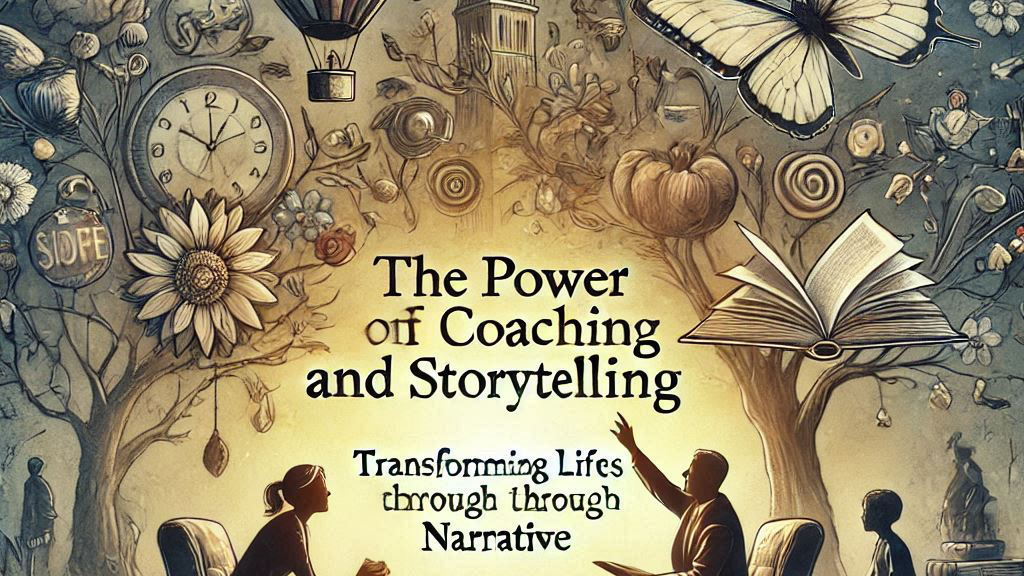

The Power of Coaching and Storytelling: Transforming Lives Through Narrative
“Stories are the most powerful way to put ideas into the world today.” – Robert McKee. In the realms of personal and professional development, coaching has emerged as a transformative tool, empowering individuals to unlock their potential and achieve their goals. One often-overlooked aspect of effective coaching is the art of storytelling. When combined, coaching and storytelling create a powerful synergy that fosters self-discovery, resilience, and meaningful change.
COACHING
Understanding Coaching and Storytelling
Coaching is a collaborative process where a trained professional helps individuals identify and achieve personal or professional goals through guided conversations and activities. Storytelling, on the other hand, is the art of conveying experiences, ideas, and emotions through narrative. Together, these two elements can significantly enhance the coaching experience.
The Role of Storytelling in Coaching
1. Creating Connection and Trust
Storytelling is a fundamental human experience that fosters connection. When coaches share their own stories or invite clients to share theirs, it builds rapport and trust. This connection creates a safe space for clients to explore their thoughts and feelings, making them more open to the coaching process.
2. Facilitating Self-Reflection
Stories encourage self-reflection by prompting individuals to think about their experiences, values, and beliefs. Coaches can use storytelling techniques to help clients articulate their narratives, allowing them to gain insights into their personal journeys. This process often leads to a deeper understanding of oneself and one’s motivations.
3. Reframing Narratives
Many individuals carry limiting beliefs or negative narratives about themselves. Coaching provides an opportunity to reframe these stories. By guiding clients to view their challenges as growth opportunities, coaches help them shift their perspectives. This reframing can empower clients to take action and embrace change.
4. Inspiring Action and Motivation
Stories have the power to inspire and motivate. Coaches can share success stories of others who have overcome obstacles, illustrating that change is possible. These narratives serve as powerful examples that encourage clients to take steps toward their goals, reinforcing the idea that they too can achieve success.
5. Enhancing Communication Skills
Storytelling is an essential skill in effective communication. Coaches can help clients develop their storytelling abilities, enabling them to convey their messages more compellingly. This skill is particularly valuable in professional settings, where the ability to engage and persuade others is crucial.
Practical Ways to Integrate Storytelling in Coaching
1. Encourage Clients to Share Their Stories
Start coaching sessions by inviting clients to share their personal stories. This can help establish a baseline for their current mindset and facilitate deeper discussions.
2. Use Metaphors and Analogies
Coaches can employ metaphors and analogies to illustrate concepts and make complex ideas more relatable. This technique can help clients understand their situations better and see new possibilities.
3. Develop a Personal Narrative
Encourage clients to create a personal narrative that highlights their strengths, values, and aspirations. This narrative can serve as a guiding document throughout their coaching journey.
4. Incorporate Storytelling Exercises
Introduce storytelling exercises that challenge clients to think creatively about their experiences. For example, ask them to recount a significant life event and identify the lessons learned.
5. Model Storytelling Techniques
Coaches can model effective storytelling techniques by sharing their own experiences. This not only builds trust but also demonstrates how to communicate effectively.
Addressing Challenges in Storytelling
While storytelling can be a powerful tool, coaches may face challenges such as clients being hesitant to share or struggling to articulate their narratives. To overcome these obstacles, coaches can:
• Create a Safe Environment: Ensure that clients feel comfortable and safe to share their stories without fear of judgment.
• Use Prompts: Provide prompts or guiding questions to help clients structure their thoughts and narratives.
• Be Patient: Allow clients the time they need to reflect and share their stories at their own pace.
Conclusion: Embrace the Journey of Transformation
Coaching and storytelling are not just tools for personal and professional development; they are powerful vehicles for transformation. As you embark on your journey, remember that your story is unique, and it holds the key to unlocking your potential. Embrace the power of narrative, and let it guide you toward a future filled with possibility.
For more information or to inquire about coaching, please fill out the form below or contact:
Dr. Wil Rodriguez
Leadership Training and Development Group, LLC
San Juan, Puerto Rico
+1-787-398-4040
